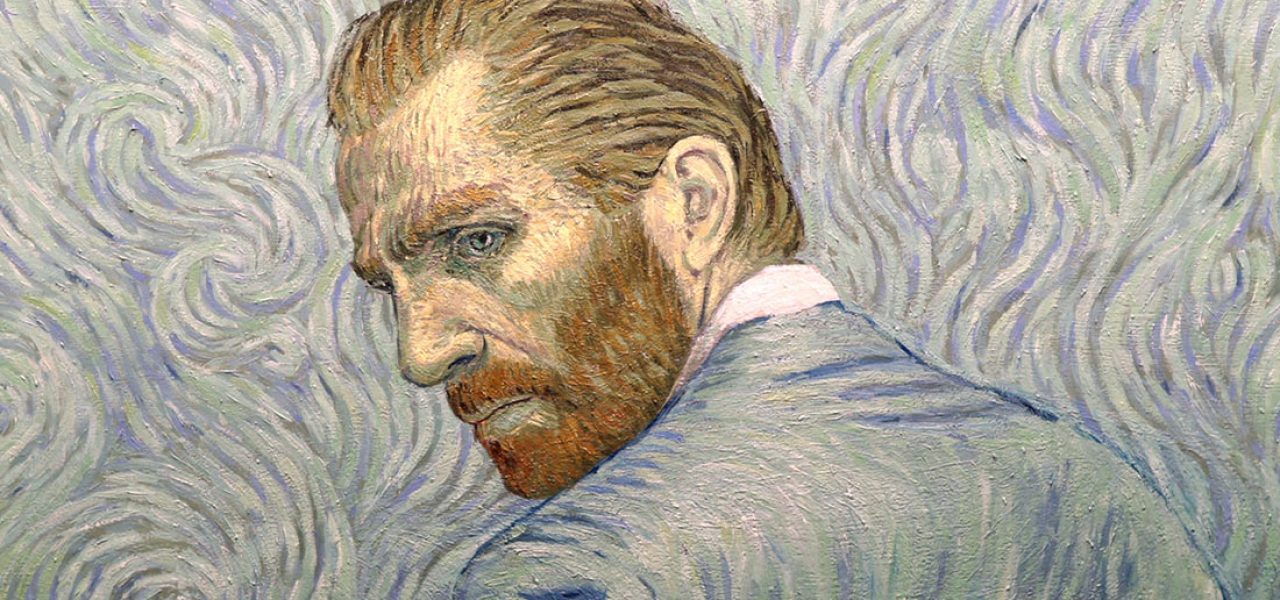
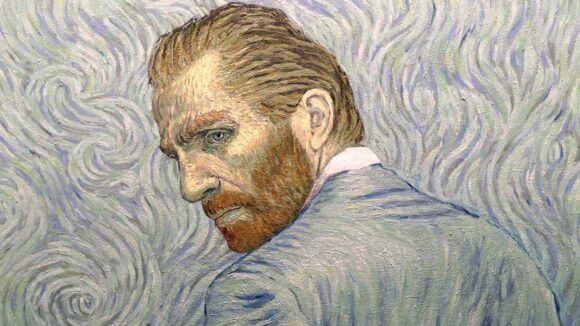
‘Loving Vincent’: 6 Facts About The First Oil Painted Animated Feature
After years of blood, sweat, and tears — not to mention lots and lots of paint — the world’s first fully-oil painted feature film, Loving Vincent, was completed last month. It was announced yesterday that the film will screen in competition at Annecy in June.
Through 65,000 painted frames, the film recalls the challenging life of Vincent van Gogh, as well as his mysterious death. Production was in the hands of Poland and U.K.-based Break Thru Films, known for their Oscar-winning animated short Peter and the Wolf (2006).

Cartoon Brew spoke via Skype with Loving Vincent’s directors Dorota Kobiela and Hugh Welchman to learn more about this unique production.
1. 125 animator-painters worked on the film
That was never the plan though. It took longer than expected to get the funding sorted out, while the film’s release date stayed the same. The filmmakers ultimately had no choice but to hire more people for a shorter amount of time. Luckily the Loving Vincent recruitment teaser went viral with over 200 million views, resulting in around 5,000 applications from painters and animators all over the world.
An intense three-day audition in Gdańsk, Poland followed. While travel expenses couldn’t be covered, people still got on planes from places like Australia, Canada, and the U.S., just to potentially be a part of the unique production.
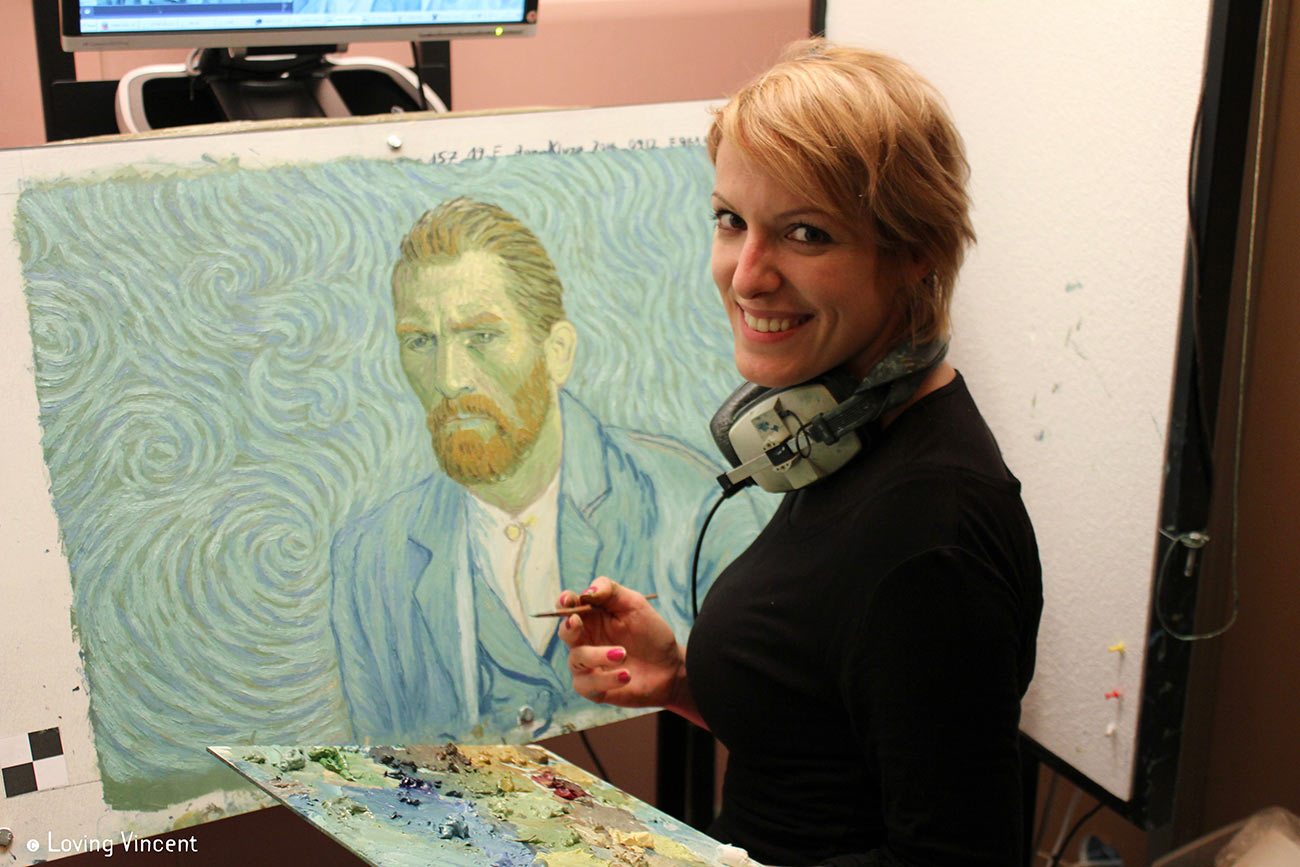
Almost none of the film’s animators had a background in animation, but were rather classically trained oil painters. “There was no way we were ever going to find enough painting animators,” said Welchman. “And also the thing with painting animators is, very often they have personalized styles, and it’s not necessarily the case that they’re classically trained painters…We needed people who were very pure oil painters.”
2. The film was completely built up from original van Gogh paintings
In all stages of pre-production, the directors stayed as close as possible to van Gogh’s view on the world. Kobiela explained that this was possible due to the fact that more than any other painter, Vincent painted what was physically around him and shared his reality with the viewer: “His paintings represent such a big range of subjects; his room, his objects, his shoes, his best friends, his favorite bar. Together, they kind of naturally created the storyboard.”
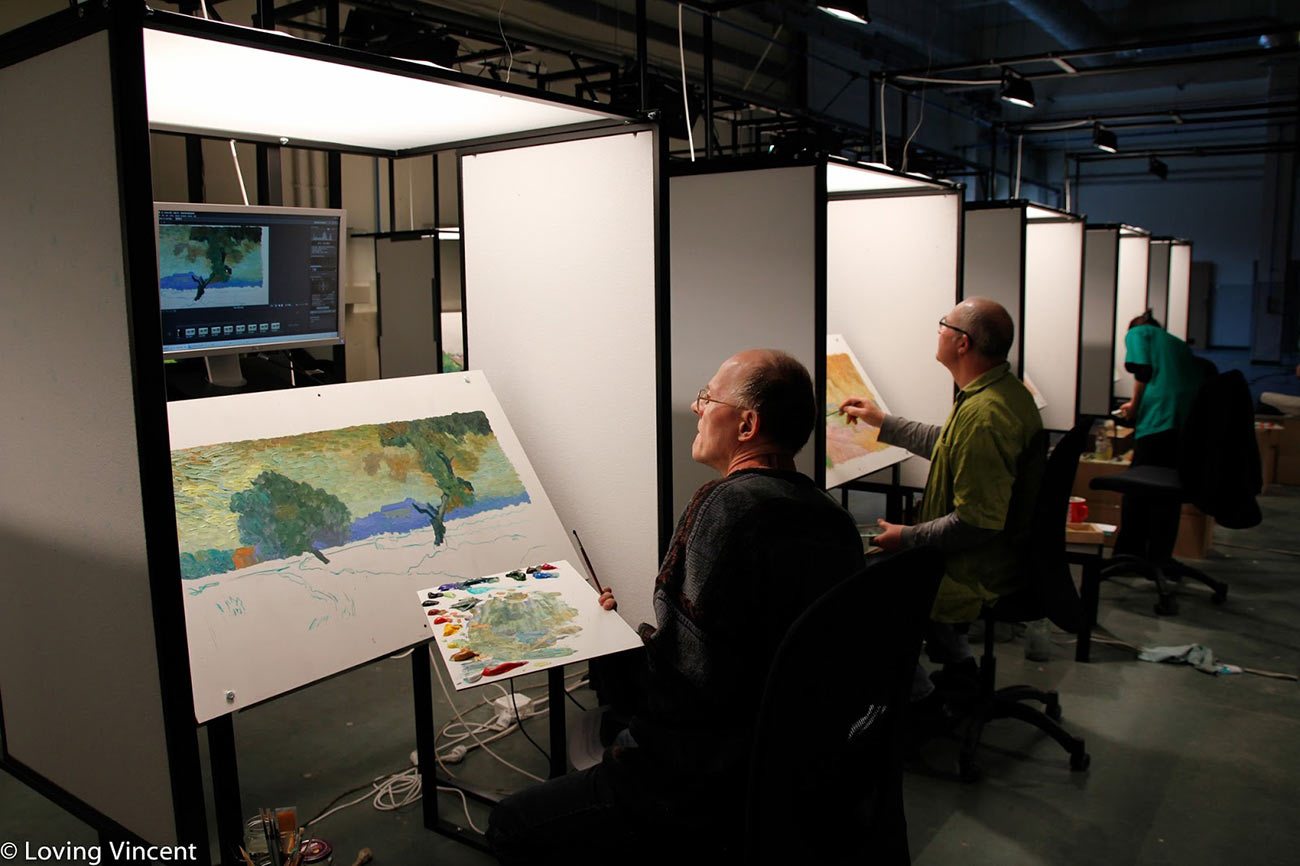
While 94 original van Gogh paintings could be used pretty much as-is, another 40 had to be reimagined for the screen. Many of Van Gogh’s canvases were 1.33:1, but some were long and thin, so they had to be adapted to work for film. Sometimes, like in the case of “Marguerite Gachet at the Piano” (1890), research would be done to add the left and right parts to the original painting. Other times a camera movement within the painting would be used, like with “Café Terrace at Night” (1888), which received a vertical pan in the movie.
In special cases paintings had to be changed from day into night, and sometimes seasons or weather needed to be altered. Welchman emphasized that while the film’s frames stayed close to the original paintings, they are not faithful copies. “They can’t be,” he said. “There’s a difference between a static single image and a dynamic art form told over time. We spent one year reimagining his paintings for the medium of film, trying to be as faithful as possible, but also adapting them so that they could move.”
3. Rotoscope was used for most of the animation
Sixty minutes of live-action reference material was shot over 12 days. “That’s even faster than soap opera,” Welchman joked. “Coming from an animation background, the advantage is that you’re pretty used to a 1:1 ratio. You’re used to planning everything very, very meticulously. You can’t afford not to.”

For each shot the original painting served as a sort of mask on top of the live-action material. Finding the right balance between those was quite the challenge. “Van Gogh had a very interesting way of capturing things,” said Kobiela. “It looks like he used a long and wide lens at the same time. Perhaps it was like that because he used to paint in one position, and then walk around and change [his position]. This way he’d capture the essence of the thing with a very bizarre perspective.”
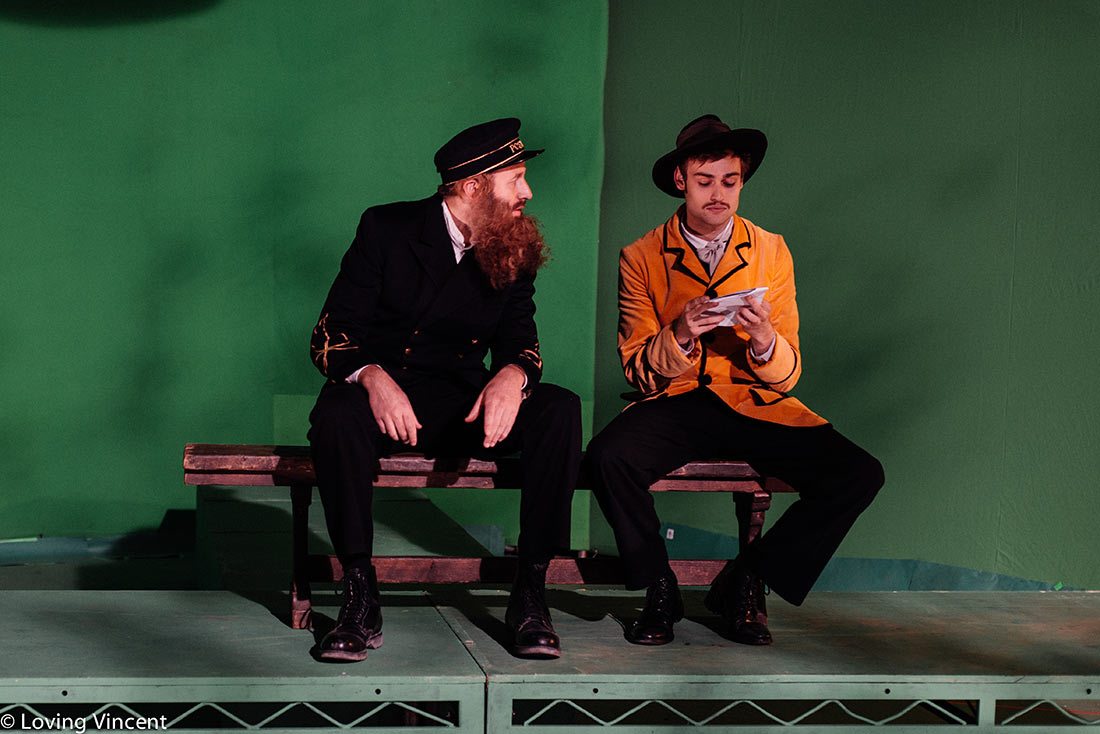
4. Throughout production, the movie was updated with the latest scholarship on van Gogh
Kobiela and Welchman read pretty much all there is to read about the painter. A new discovery in the book Van Gogh’s Ear (2016) “pretty much conclusively” proved that he cut off all of his ear, rather than part of it, Welchman said, and they ended up repainting around 3,000 frames of the film, in line with the latest scholarship.
5. The film’s budget is $5.5 million
That figure is a pretty average sum for a European feature-length animation, but it’s rather amazing when you consider the laborious technique used in this case. Funding was made up from 40% pre-sales, 40% private equity, 15% government funding (Polish Film Institute, U.K. Tax Credit, Media, City of Wroclaw), and 5% from production house Break Thru itself.
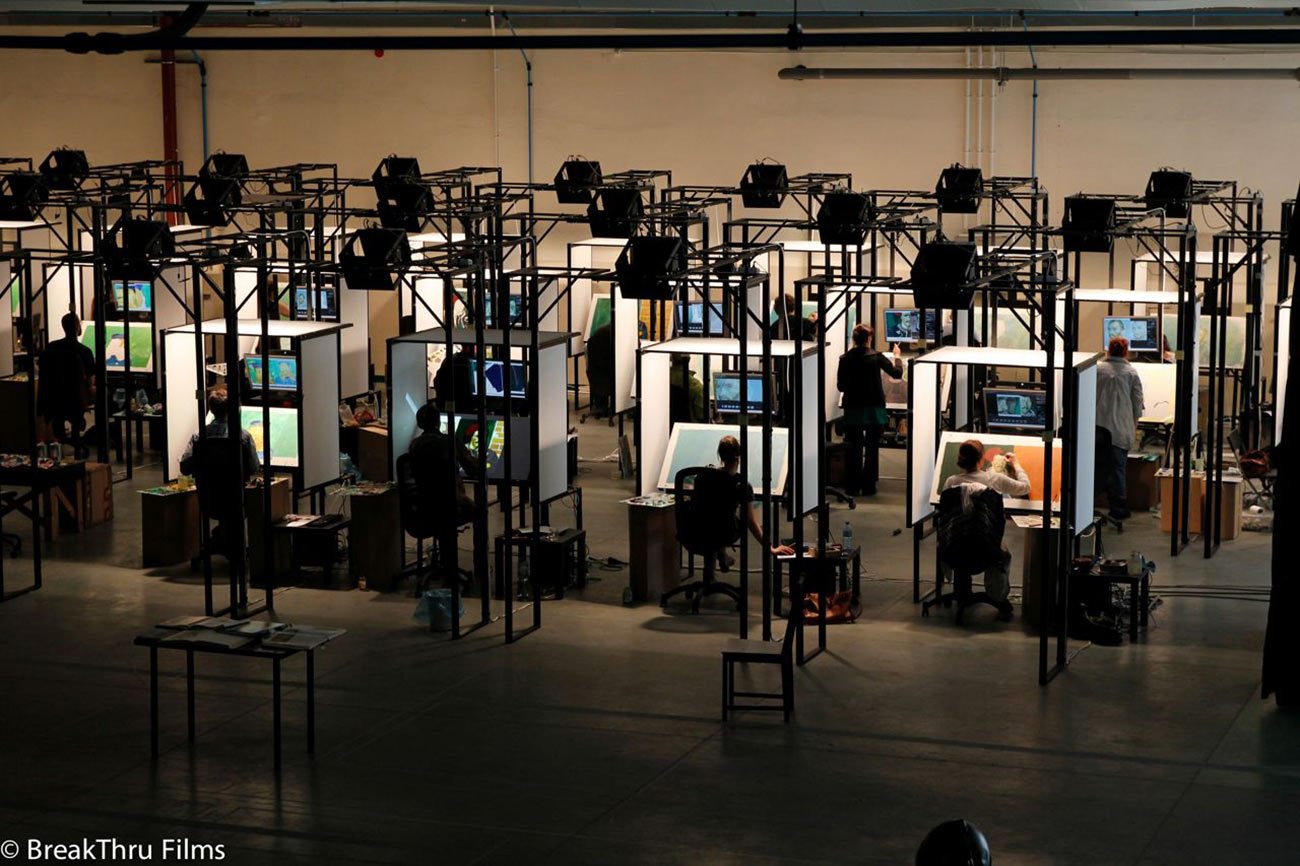
6. Out of 65,000 painted frames, just 1,000 survived
After finishing the painting of each frame, animators had to remove the full painting with a spatula. Consequently, just a fraction of the hand-painted frames survived. An exhibition of 200 paintings is currently being put together, to go with the release of the film. The other 800 paintings are being sold online.
Loving Vincent will be released in Europe and Asia starting in late 2017. No North American distributor or release date has been announced yet. For more information about the film, visit LovingVincent.com.
